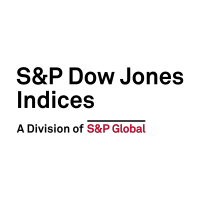Tag Archives: S&P 500 Equal Weight
Lessons from 20 Years of Equal Weight
How has equal-weight compared with cap-weight historically? S&P DJI’s Hamish Preston and Invesco’s Nick Kalivas explore how differences in index construction have influenced index performance, sector and factor composition, and results in the latest SPIVA Scorecards.
When the Winds Change
“Change is the investor’s only certainty.” Thomas Rowe Price, Jr. 2022 marked several major changes in market trends amid a substantial shift in global macroeconomic regimes. After historic levels of stimulus, multi-decade highs in inflation across several major economies led to monetary tightening. This shift weighed on asset classes in many regions, and traditional routes…
- Other Tags
Celebrating 20 Years of the S&P 500 Equal Weight Index
The S&P 500® Equal Weight Index launched on Jan. 8, 2003, so Sunday marked 20 years since the index first allowed investors to measure the performance of egalitarian allocations among S&P 500 constituents. The index is now tracked by various investment products globally, and it has potential benchmarking applications. Exhibit 1 shows that the S&P…
- Other Tags
How Low Volatility Works in Challenging Markets
When does low volatility tend to outperform and why? S&P DJI’s Craig Lazzara and Invesco’s Nick Kalivas take a closer look at low vol performance in periods of rising rates and inflation, and explore what happens to risk/return when low vol is combined with other factors.
- Categories Factors
- Other Tags
Examining Equal Weight
In this tumultuous market characterized by Fed rate hikes, elevated inflation and a strong dollar, mega-cap growth companies have suffered heavy losses, paced by recent “Big Tech” earnings disappointments from Meta, Microsoft, Alphabet, Amazon and others. The S&P 500® Top 50 declined by 19% over the past 12 months, underperforming the S&P 500 by 5%….
- Other Tags
Watch Your Weighting Scheme
2022 has witnessed a recalibration across financial markets, as investors have digested the impact of higher interest rates amid elevated inflation. Despite bouts of optimism that the U.S. Federal Reserve would take a more dovish stance, and better-than-expected corporate earnings, Exhibit 1 shows that the vast majority of large-, mid- and small-cap indices declined through…
Tracking Trends with Indices
How can indices help investors understand what’s driving market trends amid inflation, rising rates, and volatility? S&P DJI’s Anu Ganti and Hamish Preston take a closer look at key trends and what they could mean for active management and asset allocation moving forward.
- Categories Factors
- Other Tags
- Categories
- Factors
- Other Tags
A Closer Look at Indexing Equal Weight
How does indexing equal weight work in times of volatility and inflation? S&P DJI’s Craig Lazzara and Invesco’s Nick Kalivas discuss the key drivers behind equal-weight’s historical outperformance vs. the benchmark and what happens when equal weight is combined with factors and/or ESG.
Sizing Sectors
After peaks in S&P 500® concentration, the S&P 500 Equal Weight Index has tended to outperform, suggesting that there is a relationship between changes in concentration and the relative performance of equal weighting. But, does this relationship also occur at the sector level? Using the historical adjusted HHI (Herfindahl-Hirschman Index), we’ve previously established that concentration…
- Categories Equities
-
Other Tags
2022, Anu Ganti, concentration, equal weight, Equal Weight Sectors, HHI, IIS, Index Investment Strategy, institutional investor, S&P 500 Energy, S&P 500 Industrials, S&P 500 Information Technology, S&P 500 Materials, S&P 500 Sectors, sector, sector concentration, sectors, U.S. Equities, U.S. sectors
- Categories
- Equities
- Other Tags
- 2022, Anu Ganti, concentration, equal weight, Equal Weight Sectors, HHI, IIS, Index Investment Strategy, institutional investor, S&P 500 Energy, S&P 500 Industrials, S&P 500 Information Technology, S&P 500 Materials, S&P 500 Sectors, sector, sector concentration, sectors, U.S. Equities, U.S. sectors
Contemplating Concentration
After the exceptional performance of large-cap stocks in recent years, concentration concerns naturally come to mind. There are many ways to measure concentration. A simple method is to add up the weight of the top names, but the drawback with this approach is it doesn’t incorporate all the constituents in an index. The Herfindahl-Hirschman Index…
- Categories S&P 500 & DJIA
- Other Tags












































